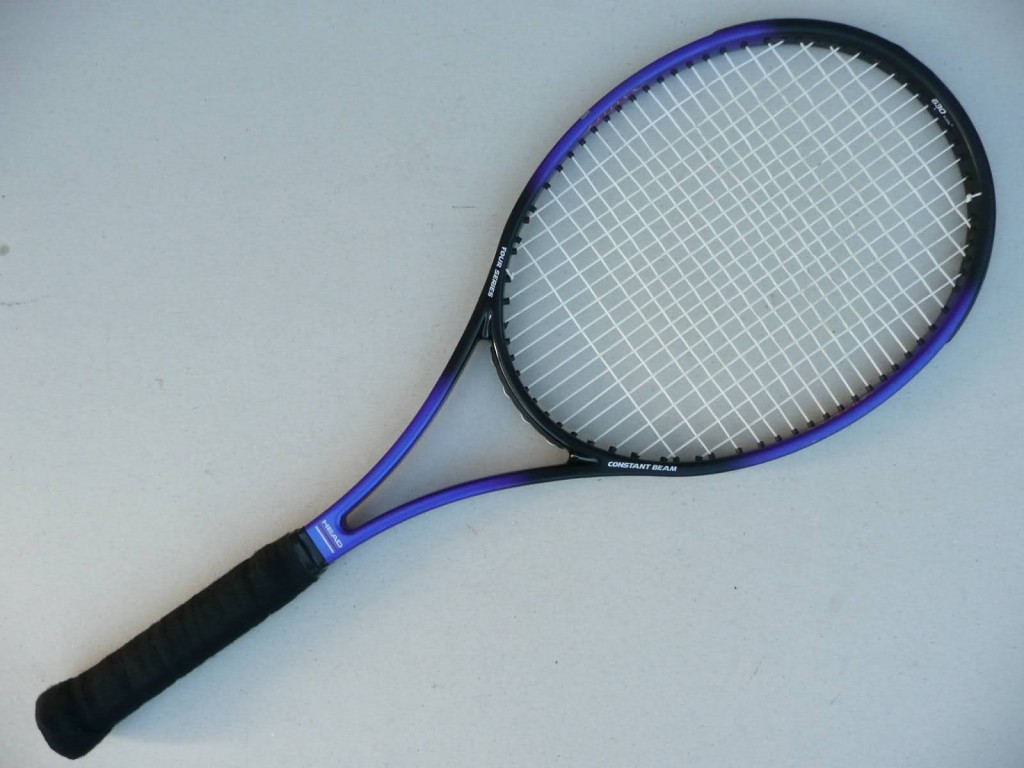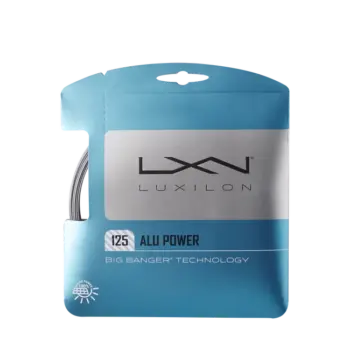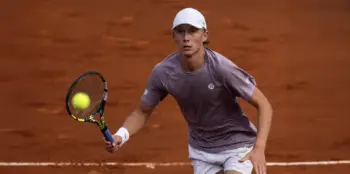A few months ago I stopped my racquet search (for the time being, you racquetaholics know exactly what I’m talking about) to go back to a racquet I used to play on and off years ago – the Head Pro Tour 630.
The Pro Tour 630, or PT630, or PT57A as it’s called in its pro stock mould form, was created in 1995 and marketed heavily by Thomas Muster and Gustav Kuerten among others.
It’s a 95 inch control racquet with a distinctive flex (usually measured as an RA rating) and after Muster’s and Guga’s victories, it’s still popular today with players like Murray (16×19) version, Simon, Haas and many more.
The PT630 is very different from the modern sticks of today. It’s heavier in stock form than most racquets (around 325 grams unstrung) and with the way it flexes it isn’t very powerful. Still, it has a unique feel that players can’t get enough of and that’s why many pro’s are not looking to change their racquet – only the paint job.
Head Pro Tour 630 offers an almost unique feel and should appeal to players looking for control and arm-friendly racquets. This is far away from the norm of today’s modern tennis racquets which are usually stiff, light and large (100 inch headsize)
Babolat created the niche of stiff, light and large racquets used by so many young players today and other manufacturers (such as Wilson and Head) have followed suit trying to cram more power into their racquets. However power comes at a price.
Power and speed are things that attract people to tennis so this makes sense from a marketing point-of-view – just compare it to cars – but the problem with powerful and light racquets is that they can contribute to players learning the wrong technique and arming the ball instead of getting the whole body involved in hitting a relaxed, yet powerful shot.
It’s not easy to control all the power in a Babolat Pure Drive for example. You need to make sure you create a good amount of top spin due to racquet head speed to make a racquet like that thrive. Most professional players add silicone to the handle, lead tape to the head and then balance and weigh each of their racquets identically to suit their preferences. You won’t find many professionals playing a retail racquet without any sort of modification or customization.
So a lot of what you see players using on the court is a form of marketing. It’s painting over older models with the paint job of new ones and sell technologies that sound great, but who rarely has actual value when it comes to racquet performance. That’s why I play with a 20-year-old racquet, because I like the weight, the feel, and I think it makes me play better. It is also refreshingly “technology free”.
More to come on tennis racquet technologies…














Is the weight of the Head Pro Tour 630 facing the cable?
The racket of Novak Djokovic, and Andy Murray’s weight is aimed at the cable?
Hi Rodrigo,
Not sure what you mean with the weight facing the cable? You mean lead tape placement? Thanks / J
the balance?
32,5 cm if I remember correctly.
Got an old pt630 cheap online. I use speed pro 360 – both strings snapped so I had to use pt630 in 2 set match. I framed alot and was losing 6,2 3,0… then i found my timibg and won the next 6 gsmes playibg some of the best tennis Ivr ever played. Consistent, massive forehands, really great on short low ball, accurate consistent 1st serves and crazy drop volleys. Sweet spot is small but whwn you stqrt hitting it… wow. I just got better and better. Not sure what to use now!
The PT630 is sometimes magical when you are on your game. If you are not – it can be quite punishing…It is always tough choosing a stick to commit to!
Recently I bought a Head Pro Lite Tour 18×19 red/Black designed in Austria, which i had found cheep on a our local spanish classifides. I just gave it to local Decathlon for stringing. Before to buy the racquet i tryed to find any info about it but found nothing. Now eager to try it playing. It has L2 grip, which is little for me, so i think to put en extra leather tape under the usual protective tape.
It should have a similar touch as the PT630, right?
I just bought a head pt630 yesterday that comes with normal uncapped grommets.
Do you have any idea about the specs? Strung weight, swing weight and balance?
What tension suits this frame best if Im going to string it up with a fullbed of poly?
Hi,
Nice. Off the top of my head: 325 grams unstrung, 8 pts HL, SW 325 strung. I would string it low, around 21-22 kg with full poly. But it plays the nicest with a hybrid setup with a softer main string. Cheers / Jonas
Hi Jonas,
Thanks for the reply… I have a set of klip gut 15 and alu rough 16l that Ive been saving for special stick hahaha. DO you think its worth giving it a shot and use this set up on this frame? Im conscern that it might kill the spin potential using a thick gauge string. I do have some g17 stiff poly here though. It might work on this frame better considering its 18×20 string pattern.
On a side note, I have a mint iprestige mp xl that ive shortened to 27 inches. Have you tried that frame or the iprestige mp? How do you feel about it compared to the PT630
Would love to see you compare classics sticks like the Iprestige, radical tours and PT630 on your youtube channel. I feel like theres not enough content on this beloved frames out there.
Hi,
I think you will love a hybrid of natural gut and Alu rough in this, actually quite special, stick.
The iPrestige offers great feel and playability, not as sweet as the PT630, but with a bit more power.
Will try to create more “heritage” content about older frames!
Cheers / J
I’ve grown tired of the modern tennis racquet – too stiff, too light, and absolutely no feel. With the advent of new materials with high strength to weight ratios tennis manufactures have become more profitable than ever by pushing these racquets with marketing hype – “power..power…and more power,” while destroying players arms, wrists, backs, and shoulders. These modern racquets are so over engineered for strength/stiffness that they could literally hold the weight of an elephant, all in the name of justifying their 200 plus dollar cost. Shame on them all! Once again profit over safety. I’m going to make my own racquet using both natural and made made synthetics that incorporates flex, feel, control, and power like is was long ago. Stay tuned, as I will be marketing this racquet soon. Forget the marketing hype and stop profiting these companies who don’t care about tennis player’s health and only care about how much money they can make.
Hows the journey going, my friend? Any news on the racquet?